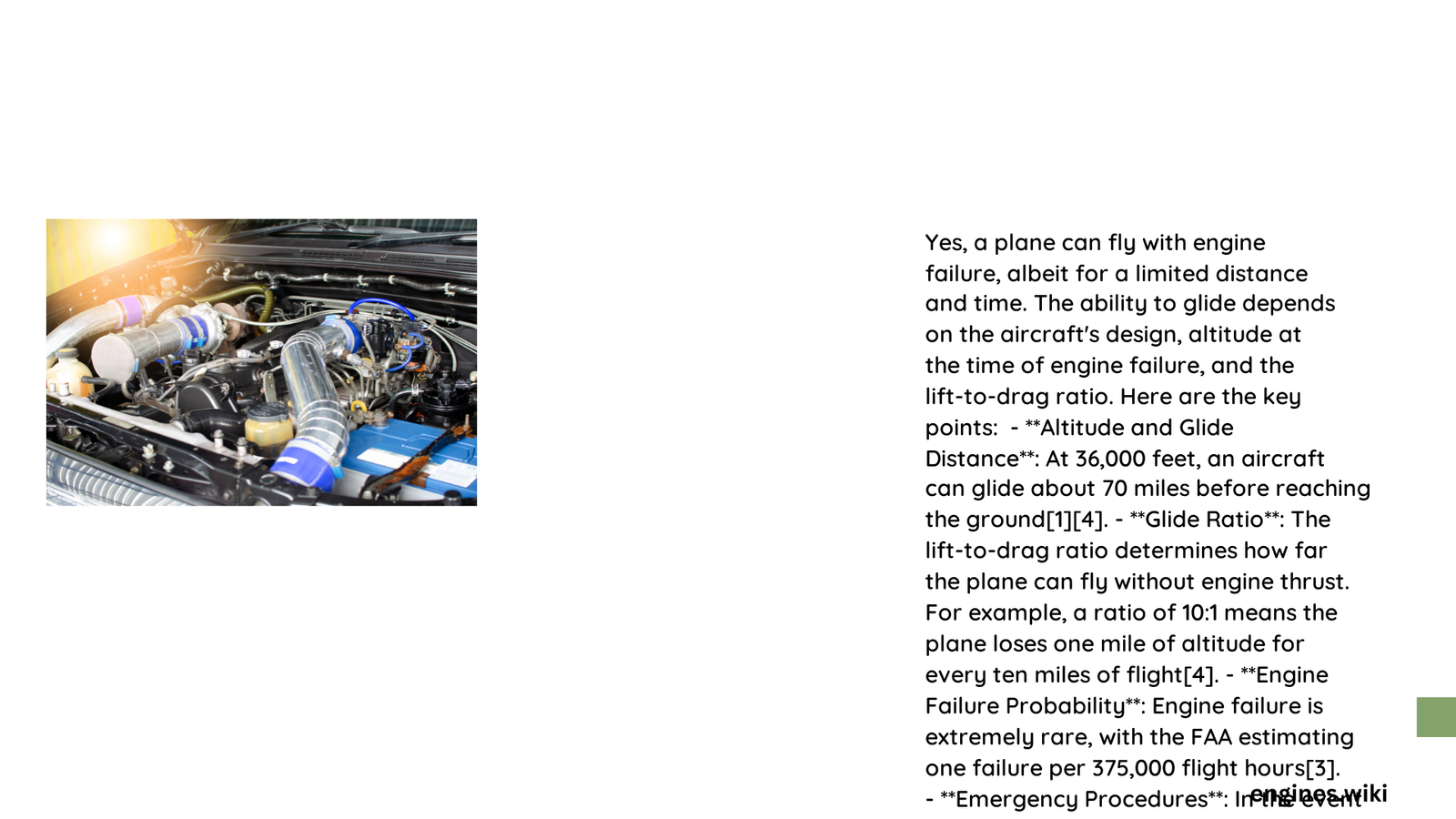When an aircraft experiences engine failure, pilots have remarkable capabilities to safely navigate and land the plane using sophisticated glide techniques, aerodynamic principles, and precise emergency protocols. Modern aircraft are engineered with redundant systems and advanced design features that enable controlled descent and potential safe landing, transforming what seems like a catastrophic scenario into a manageable emergency situation.
Can Aircraft Actually Survive Without Engine Power?
Aircraft are surprisingly resilient during engine failure, with multiple survival strategies depending on the type of plane and altitude. The ability to glide depends on several critical factors:
Glide Ratio Performance Metrics
| Aircraft Type | Glide Ratio | Distance per 1000 Feet |
|---|---|---|
| Cessna 172 | 9:1 | 9,000 feet |
| Boeing 777 | 20:1 | 30 nautical miles |
| Airbus A330 | 15:1 | 22.5 nautical miles |
What Determines Successful Glide?
Several key elements influence an aircraft’s ability to glide safely:
- Altitude at Failure
- Higher altitudes provide more time and distance for emergency procedures
-
Pilots can select optimal landing sites with increased altitude
-
Aircraft Design
- Aerodynamic wing shapes
- Weight distribution
-
Structural integrity
-
Pilot Training
- Quick decision-making
- Understanding best glide speed
- Emergency landing techniques
How Do Pilots Respond to Engine Failure?
Immediate Action Protocol
- Maintain Aircraft Control
- Establish best glide speed
- Trim aircraft for optimal descent
-
Identify potential landing zones
-
Communication
- Contact air traffic control
- Declare emergency
- Provide precise location
Technical Survival Mechanisms
Aerodynamic Principles
Modern aircraft leverage sophisticated aerodynamic principles during engine failure:
- Potential Energy Conversion
- Altitude transforms into forward motion
- Wings generate lift without engine power
-
Controlled descent trajectory
-
Redundant Systems
- Multiple engine configurations
- Backup electrical systems
- Emergency power generators
Real-World Success Stories
Several documented cases demonstrate successful engine-out landings:
- US Airways Flight 1549 (Hudson River Landing)
- Both engines failed after bird strike
- Captain Sullenberger landed safely
-
All 155 passengers survived
-
Air Transat Flight 236
- Complete engine failure mid-flight
- Glided 19 minutes without power
- Successfully landed in Azores
Critical Survival Factors
| Factor | Impact on Survival |
|---|---|
| Pilot Experience | High |
| Aircraft Design | High |
| Initial Altitude | Moderate |
| Weather Conditions | Moderate |
Conclusion: Engineered for Safety
Aircraft are meticulously designed with multiple fail-safe mechanisms, ensuring passenger safety even during catastrophic engine failure. Comprehensive pilot training, advanced aerodynamic engineering, and robust emergency protocols transform potential disasters into manageable situations.
Recommendations for Passengers
- Stay calm during emergencies
- Follow crew instructions precisely
- Trust pilot’s professional training
Reference:
– NTSB Accident Reports
– FAA Safety Guidelines
– Aviation Safety Network

